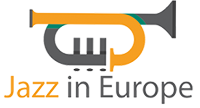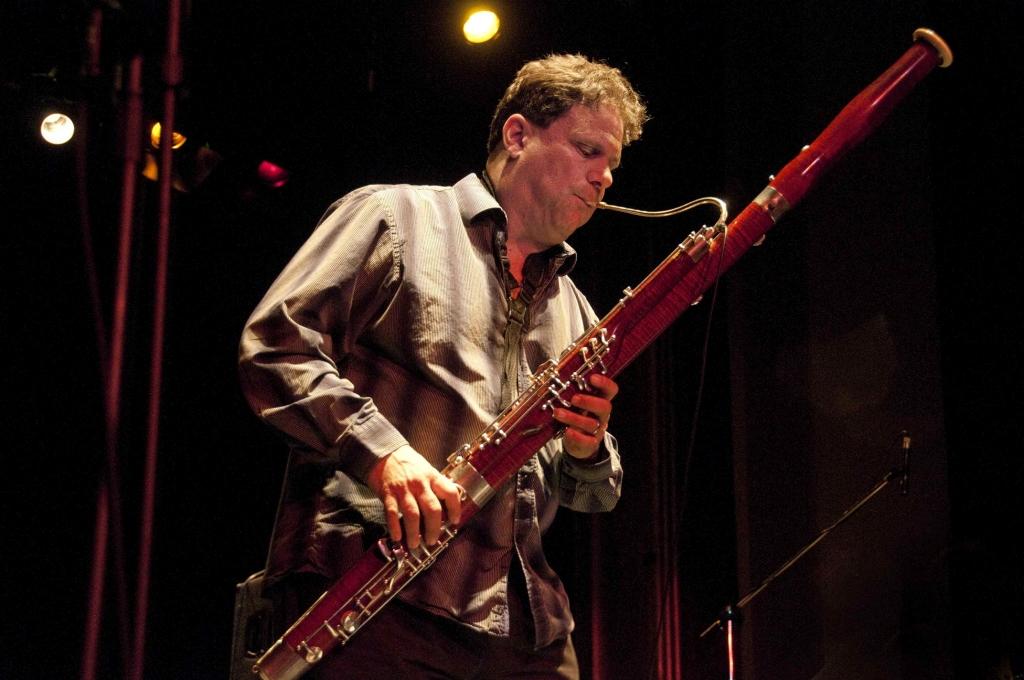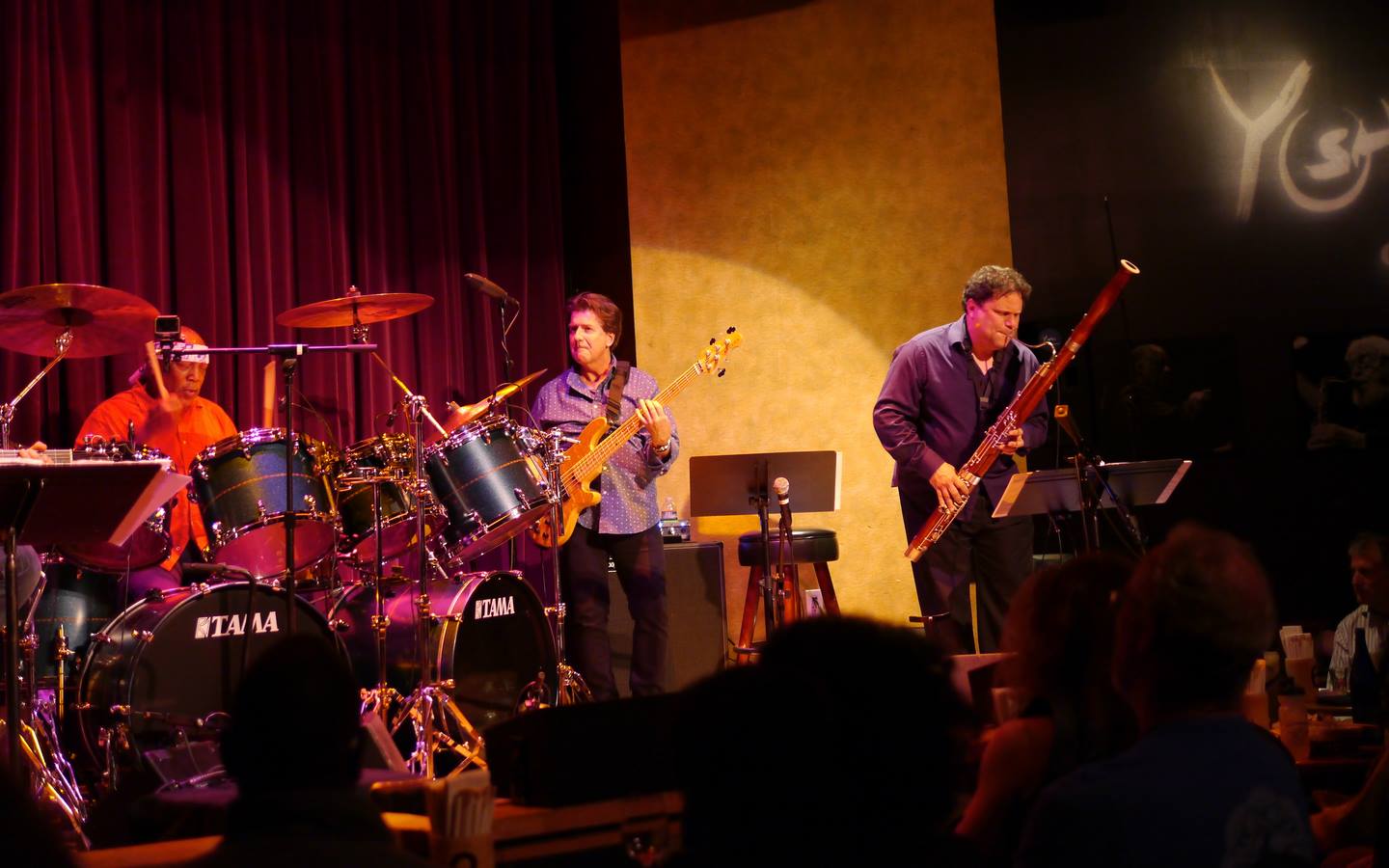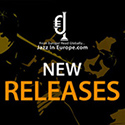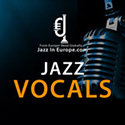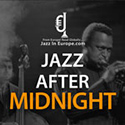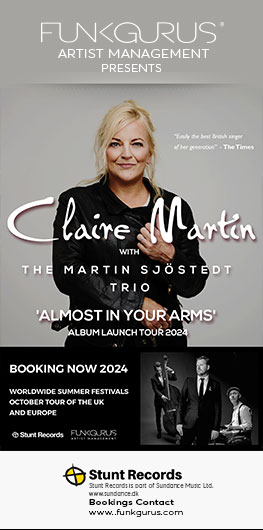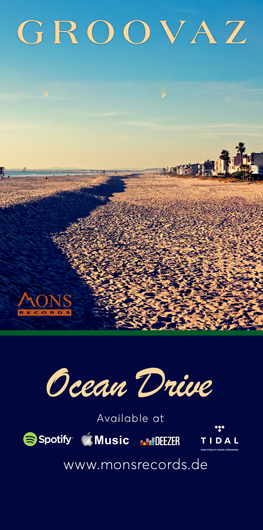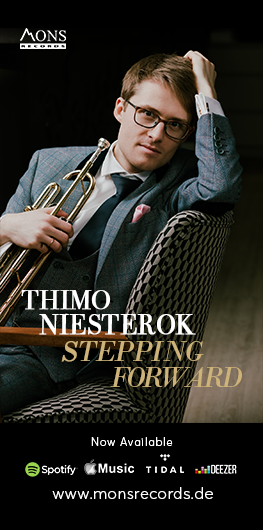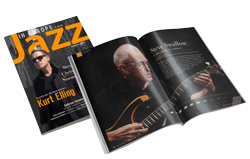Paul Hanson is one of the world’s best-known jazz bassoonists. Playing an instrument more often associated with classical music, he has managed to clear his own path building a well rounded musical career as a recording and touring musician. His innovative use of electronics, looping effects and his rhythmic approach has brought him to a place on the world stage through his solo shows and with the likes of Bela Fleck, Cirque Du Soleil and in his current position as bassoonist with the legendary Billy Cobham and his “Crosswinds project”
Paul was also my bandmate for four years (2008-11) in Tokyo Japan with our Cirque du Soleil ZED show at Tokyo Disneyland. I was the bassist for that show.
Interviewer: Darrell Craig Harris (DCH) Paul Hanson (PH).
DCH – So obviously we have worked together in Tokyo with Cirque du Soleil’s ZED show at Tokyo Disneyland and I know some of your background, but I’d really like to start with you telling us where you grew up and how you got your start in music?
PH – Well, I was born in San Francisco then we moved to Berkeley California when was still a kid, I first started on guitar because I really loved the Beatles and use to listen to them all the time. I learned every song the Beatles played kind of, except the one I couldn’t figure out was “My Guitar Gently Weeps” because how can you have an A minor chord where the bass keeps changing haha! So I couldn’t figure that out!
So then we move to Berkeley (California) in 1969 because my dad was a music teacher for the public schools there, he was a choir teacher first in San Francisco then somewhere in the peninsula.
DCH – How old were you when you guys moved to Berkley, Calafornia?
PH – Seven years old.
DCH – So you were too young for the hippy adventures I’m assuming?
PH – No definitely not, I remember all the stuff-cause my parents were involved in the stuff a little bit as folks music fans and as music fans in general and they were also involved in the politics of the time. A very diverse time there musically. Around that time I switched from guitar to clarinet because I wanted to be in the school band, and my dad’s also a clarinet player. One of my memories of that time was that my school bus driver Charles would always have on KDIA Lucky 13 on the bus radio which was one of the Bay Area’s Motown and soul stations, so on the way to school I would here all the classic Motown and soul records! Such great music!
DCH – So you were getting exposed to all that great music on a daily basis?
PH – Oh my god, it was fantastic! Then I had my parents playing Eastern European folk music like Klezmer stuff or Balkan stuff, it was awesome and I was so lucky! My mother was a classical pianist, so we heard that too so you know we just heard lots of music.
DCH – So you started on guitar and clarinet, and then sax and finally Bassoon?
PH – Yeah, I played clarinet and saxophone, and I was in the jazz band at Berkley high (California). In tenth grade I started playing bassoon, because I had went to a chamber music festival/conference around that time and I just loved playing chamber music. At those chamber music symposiums / conferences you would play concerts everyday and you would play it at night so it was like hours and hours of beautiful Bach and other amazing composers!
DCH – What attracted to you to the bassoon sound wise originality?
PH – Well, it was just like ok you know you can play both a bass part and a top part so it’s this big sound, with saxophone it’s a beautiful instrument of course but it’s primarily a melodic instrument so it doesn’t really accompany people in terms of a bass line or something like that. Being involved with the bassoon in the classical music sense was fantastic, but also it’s the parts you play with an orchestra or something like that that were pretty cool too you know.
DCH – How did you get started as a professional musician and did you study music after high school? What was that background?
PH – First of all I didn’t go to college for a couple of years, I played sax in party bands around the Bay Area at college parties etc. Then my parents wanted something better for me, so they offered for me to go to the New England conservatory in Boston for one year. I was something there called a third stream student, which was with their classical department. They did have their middle stream path but the was a little too free style for me for what I wanted to do, so I thought my parents are really spending a lot of money for me to go here so let’s get a degree in this because I really want to learn how to play the bassoon! So I got one year of schooling there in Boston, then I was offered a scholarship which included the opportunity to get paid to go to school at the San Francisco conservatory so I moved back to the Bay area. When I moved back in 1982 I started working in R&B bands again while attending the conservatory to gain more experience and make some money too of course.
DCH – So at that point you’re playing sax for the bands and studying bassoon correct?
PH – Well yes, but I got a real awakening, I thought I was really good but then I went to Boston you know there was so many great sax players I got my ass kicked a little bit which was good for me. So back in San Francisco I began playing five nights a week four sets a night in clubs with band called the “Tomcats” which was band that basically helped me go through college.
DCH – So how long were you at the San Francisco conservatory?
PH – It was three years total, I didn’t get my B.A. there I actually received it much later because I didn’t do any of my academics at the time I just studied music.
DCH – Did the teacher and counsellors at the San Francisco conservatory have issues with you playing pop music at the same time studying serious classical music there?
PH – Yeah, oh yeah! It’s totally different now of course, and it’s really changed over the years. Also, now you really have to have a degree to do anything in classical music. At the time when I attended the conservatory, they were like are you gonna be able to make your classes after playing out at clubs so late? Also at the time I was always told that by many there that “you can’t play jazz on the bassoon” you should just focus on classical, they just really wanted to focus me!
My teacher was just trying to mold and guide me so I could have financial security later in life, because I had the talent for classical so he was trying to develop me! I was just so much like somebody has to do this and play jazz with the bassoon, but you know I could see his point. It was just nuts with what I was trying to do with the bassoon at the time.
DCH – At that point in the mid 80’s was there any other jazz bassoon players out there doing what you wanted to do?
PH – Yes, there had been! There was actually a guy named David Wells who’s a bassoonist who teaches at Sacramento state in California who did an entire dissertation/post-doctorate thesis on jazz bassoon, and you had a jazz bassoonist back in the 1920’s with Paul Whiteman’s orchestra. There was also a guy with the Australian jazz quartet (AJQ) called Errol Buddle recording and touring in the mid-1950’s and he just recently passed away.
DCH – So, there were guys playing some jazz bassoon, but just not too many of them and no one really using electronics and effects correct?
PH – No no, not too many for sure, but they were a good inspiration to make me want to try something. Well, the guys that were with the symphonies at the time might do it or for a recording session and they would just call the tunes something silly like “Jimmy had a Billy goat” or something, haha and then it was like this guy would blow a little jazz part or something, but just almost as a novelty or something.
DCH – Just to back you up a bit, you were still playing and touring on saxophone while you were developing your jazz bassoon chops correct?
PH – Well, I wasn’t really touring so much but just playing you know doing the club thing.
DCH – I know you played and recorded as a sax player in the mid 80’s with pop singer Eddie Money, can you tell me a little bit about that and what songs you played on with Eddie session wise? What was that experience like with Eddie?
PH – Well, if you’ve ever seen the movie “Boogie Nights” it was like that a little haha, lots of craziness going on all around that gig, and I don’t know if we were the first choice musicians (horn section) by his management but we knew some of the other people in his band at the time.
DCH – I know one of the great things of your time playing and recording with Eddie is that you actually recorded the sax parts including the famous solo on Eddie’s seminal 80’s tune “Take Me Home Tonight” I imagine a lot of people assume Eddy played that solo?
PH – I tell people all the time and they are like really that’s you? Haha I mean it’s not something to omit from my career, it’s cool you know! There were a lot of pop bands in the 80’s using horn sections so I was doing a lot of that at the time. It really wasn’t until the early 90’s that I really made a conscious effort to make bassoon my main voice. I just really enjoyed the sound of the bassoon!
DCH – So since then you’ve had a really wide-ranging career with lots of touring and recording, including recording and playing live with jazz/fusion banjo player Bela Fleck? Playing on the “Live at the Quick” video performance correct?
PH – Yes, that was in 2000/2001. How that came about was really interesting actually.
So, I was playing a function/gig in 1998 with Paul McCandless who’s an Oboist who worked with a fusion group called OREGON and also worked with the “Paul Winter Consort” which is known for mixing classical, jazz and Indian music together. Paul McCandless was playing at the Great American Music Hall in 1998 in San Francisco and he asked me to come down and sit in with his band, so I did that. Paul his various different projects and doing his own thing had been also working with Bela and the Flecktones which was awesome of course. Then a year later in 1999 I went to the summer NAMM show in Nashville and met Roy Wooten who’s known as “FutureMan” and he was at the time doing this really interesting microtonal fusion band using guys that were playing various classical instruments. They were doing some wild stuff, so I did do some things with him there in Nashville while I was in town for the show. Then in the winter of 1999 while I was back home in Bay Area I get a call from Bela, he just called me out of the blue and said we’d like to have you record and tour with us on some dates! I was never like a full-fledged member of the band; I was more like an auxiliary guy. With Andy Narell (steelpans) Paul McCandless (saxophone) whom I had met a year earlier in San Fran, myself and a throat singer from Mongolia by the name of Congar Ondar along with Bela and The Flecktones. We actually won a Grammy for the “Outbound album” which was most of the music we performed on the “Live at the Quick” concert video! A great experience for sure!
DCH – Let’s talk about your current gigs and tours. You are these days touring with your solo bassoon show and also touring with Billy Cobham’s “Crosswind” project, can you tell us about more about both of those projects and working with Billy Cobham?
PH – Yes, currently I have my solo show with just myself and a looper along with my effects pedal board. I have my loops that I work with, and they are very simple for the most part. They are either parts of songs with maybe a bass line or other parts I play along with. The looper I use is called an “Infinity Looper”. I’m also using an invention called a “Little Jake” that’s a little piezo pickup for my bassoon, that works really well and it can also be used for other instruments needing that type of pickup. Some of the songs I perform are non-originals like I do a fun version of Glenn Campbell’s “Wichita Lineman” along with my compositions of course.
DCH – So you’re playing everything live except for the loops, no tracks correct?
PH – Yes correct, except I don’t do a live looping thing because that can be really boring for the audience having to watch you build the loop parts live so I have the loops pre-stored on the looper. With my solo bassoon stuff, I often do my shows at music halls affiliated with universities in combination with clinics and symposiums for other musicians and music students.
DCH – Touring wise for your solo bassoon shows what dates and locations do you have coming up?
PH – September 3rd through the 10th I’m doing a tour of Portugal in Lisbon and various other cities also doing some masterclasses along with playing with some other local musicians. Doing the masterclasses and teaching is all part of it really, because people have all kinds of questions about playing jazz bassoon and my approach with the electronics and such! It’s also a great way to mix people who are classical players and jazz musicians together which is fun!
DCH – How did you get involved with Billy Cobham’s “Crosswinds” touring project?
PH – Oh well, this is funny! Um well a couple of things with that. One thing was Billy had used some bassoon player over in Europe before me, because Billy was living in Switzerland for a few gigs and Roy (Wooten) had found out about it and he told Billy you should really check out the guy we used with Bela Fleck. Then Billy became my friend on Facebook and he started liking my YouTube videos. Roy then told me that he’s really thinking about using on for his project and you should try to make more of an impression, so I did and that’s how I got the gig. I thought it was just going to be maybe a one-off date or something like that, but it wound up that I’m in the band and touring with him and we also have plans to make a record in the near future!
DCH – Where have you guys performed and toured at so far with the Crosswinds project?
PH – We’ve played with Blue Note in Milan, Bologna Italy and all over the United States including New York City.
DCH – What material have you been playing on these live shows?
PH – There’s a record called “Crosswinds” he released in 1973 or 74, so we are doing music from that record and some of his other music as well. He has a lot of fans that still have all of his records he’s made over the years of course so we try to play some of that too live.
When you really think about it, you had Mahavishnu Orchestra which was known for playing really hard, really loud and for playing a lot of notes in odd time signatures and all this crazy stuff, well as much as he can do that Billy kind of put the funk back in it in some ways. He really helped start that jazz genre of jazz fusion, and also music that was accessible and music that people could kind of nod their heads to also.
I know Miles did that too to some degree of course, but then it got kind of fusiony like “Return to Forever”. I love that stuff, but you know we are playing things like “Stratus” and it goes over well! Billy’s like a friendly volcano, all that stuff the people play now Billy had a lot to do with by really influencing a lot of players. I mean he played straight ahead with Horace Silver before that, there are videos of him with Horace back in the day playing a very small drum kit and he played his ass off!
DCH – You also have European dates currently being booked with Billy’s “Crosswinds” band correct?
PH – Yes correct, we will have shows in England and Russia and those dates will be in November and December of this year, they should be posted on Billy’s website shortly at www.BillyCobham.com my solo bassoon shows coming up in Portugal along with my other projects can be found at www.PaulHansonmusic.com and I am of course on many social media outlets including www.youtube.com/jazzbassoonpaul Facebook etc.
DCH – Paul thanks so much for your time and for sharing a bit of your world with us, I’m sure our readers will enjoy learning more about you and hopefully they will take a moment to ck out your awesome playing either live or from your YouTube videos!
PH – Sure no problem, great or talk to you and thanks for taking an interest in what I’m doing! We will see what the future holds for this project, but everything is great and Billy’s blast to work with! Bye for now!
Text/Interview: Darrell Craig Harris
Photo Credits: Brad Fanilhough, Anil Prasad, Stephen Jacobson, Paul Hanson Facebook page – and (c) info: all rights go to original recording artist/owner/photographer(s).
Last modified: April 25, 2020

